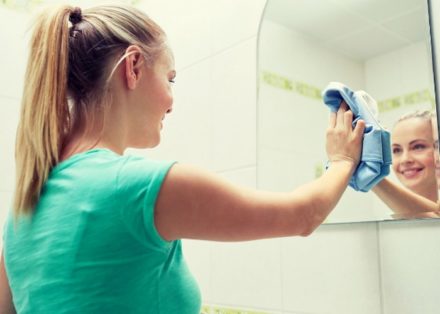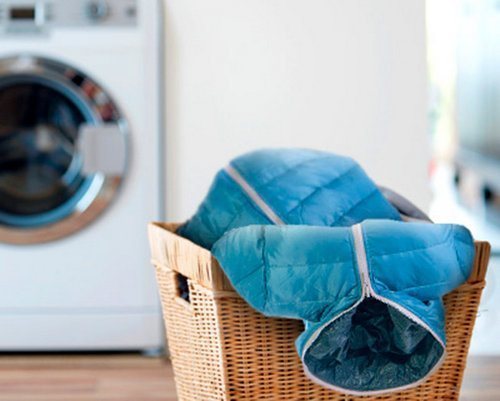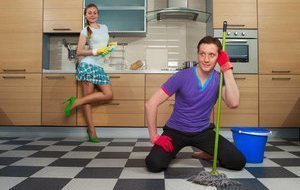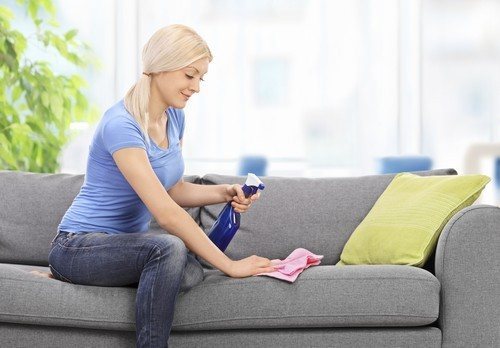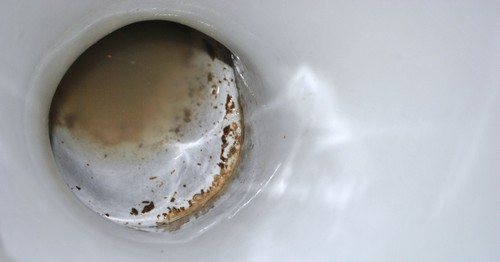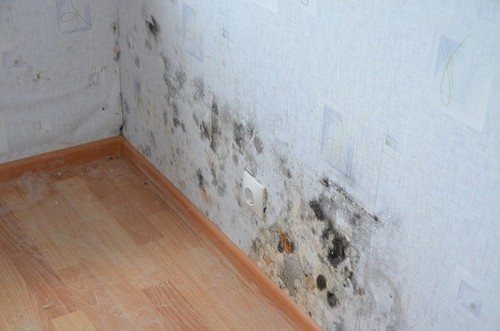“Shines like a mirror” - this is what they say about something perfectly clean, smooth, and reflecting light. In order to achieve cleanliness and transparency, you need to wash the mirror properly.
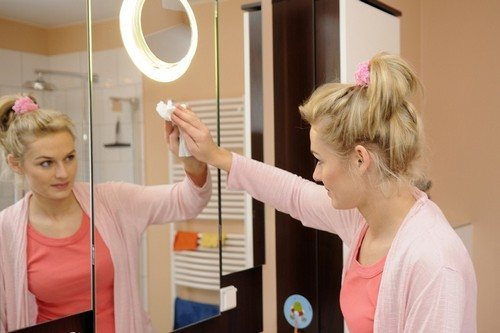
- Causes of pollution
- How to properly wash a mirror
- Special products for cleaning mirrors
- Mister Muscle
- Spectrum-PROFI
- Aquapel
- Help
- Amway
- Clin
- Frosch Glass Cleaner
- Cif
- Ecover
- Synegetic
- Automotive facilities
- Monitor cleaning liquid
- Napkins
- Folk remedies for cleaning mirrors
- Ammonia
- Salt
- Potato
- Milk
- Blue
- Alcohol
- Onion
- Chalk
- Toothpaste and powder
- Vinegar
- Wax
- Turpentine
- Paper
- Capron
- Use of abrasives
- Choosing a rag
- How to clean a mirror without detergent
- Cleaning mirrors without streaks
- How to achieve shine
- Frequency of washing
- Features of removing various contaminants
- How to prevent your bathroom mirror from fogging up
- Does a new mirror need to be washed?
- General recommendations
Causes of pollution
This piece of furniture in our home becomes contaminated with the smallest specks of dust, cosmetics, drops, fingerprints, and insects. In the bathroom splashes of water are added.
How to properly wash a mirror
To wash it, you must first determine the cause of the contamination and choose a method.
The general algorithm is:
- First, wipe the mirror and frame with a wet cloth.
- Then old contaminants are removed using special means.
- Rinse off with water again and polish.
Special products for cleaning mirrors
There are a lot of products for cleaning mirrors, which include aerosols, foams, and wipes soaked in a cleaning composition. Let's take a closer look at the most popular of them.
Mister Muscle
A common popular glass cleaner, available in the form of a multi-colored liquid in spray bottles. It contains ammonia, propane and isobutane. Breaks down dirt and polishes the surface. It has a rather pungent odor of ammonia. Very popular among housewives because of the quality, and because of the replaceable inexpensive blocks that save the budget.
Spectrum-PROFI
Available as an aerosol. Professional detergent for glass and ceramic products. Can be used at low temperatures. It copes quite well with all types of household pollution.
Aquapel
A device designed to protect car windshields is popularly called “anti-rain.” It is loved not only by drivers, but also by housewives. Thanks to a carefully selected formula, it prevents the appearance of stains and streaks on the glass and makes it easier to remove insect residues. Available as a set in the form of a gel, which is applied to the surface with a special sponge and rubbed in until completely dry.
Help
Product made in Russia. Sold in clear plastic spray bottles. Consists of water, isopryl alcohol, surfactants and excipients. The chemical composition is safe to use.
Amway
An effective product for ideal, streak-free cleaning of glass and mirrors. Available in concentrated form. Before use, you need to dilute - three parts water to one part substance.The manufacturer claims that it contains only ingredients from natural sources that have passed dermatological testing.
Clin
This is an Austrian household chemical product. The dispenser is especially well made: it can be applied in the form of tiny drops or in the form of foam. Thanks to this, it is not only effective, but also saves family money.
Frosch Glass Cleaner
The composition includes special ampholytic surfactants, which are of plant origin and are completely biodegradable. Despite its naturalness, the liquid perfectly dissolves fat and protein and is easily wiped dry.
Cif
A series of Hungarian cleaning products for cleaning residential premises. Safe and effective. Produced in plastic bottles of 500 ml, economical, without a strong odor.
Ecover
Belgian glass cleaning liquid. Has a natural light aroma. Absolutely hypoallergenic, can be used without fear in bedrooms and children's rooms.
Synegetic
One of the effective products of this Russian brand is a product for cleaning windows, mirrors and adding shine. The entire line has passed numerous clinical trials in various research institutes and complies with SanPin standards. Therefore, its use is safe, effective, and economical.
Automotive facilities
Car chemicals, in addition to cleaning the mirror well, protect it with an invisible film and simplify further maintenance. However, it is worth paying attention so that the chemistry is not aggressive to frames and furniture and does not damage them. The room where auto chemicals are used must be ventilated and fireproof.
Monitor cleaning liquid
If necessary, you can use special liquids for cleaning computer monitors.The only negative is that they contain few polishing substances, but they clean stains and dust well. The composition also contains antistatic agents that reduce the attraction of dust particles.
Napkins
Cleaning wipes - wet, soaked in a special composition, or dry, will also help clean the surface of dirty stains, polish it and provide an antistatic effect. It is convenient to store the napkins next to the mirror, and if it gets dirty, wipe it immediately without using liquid products.
Folk remedies for cleaning mirrors
In addition to modern chemicals, you can use folk remedies to clean the mirror.
Ammonia
Ammonia, or ammonia, is included in almost all cleaning products. There are two compositions you can make at home:
- Take ammonia and tooth powder in equal proportions, mix well until smooth, apply and let dry slightly. The resulting paste is removed with a dry soft cloth.
- Mix a tablespoon of ammonia in a liter of water and wash the mirror. Wipe dry.
Salt
Dissolved salt removes old dirt and traces of insect activity. To do this, take table salt and warm water in proportions of 1 to 10, stir well, wash the surface and wipe dry.
Wet fine table salt will clean dried gum and sticker stains well.
Potato
The starch contained in potatoes will add shine and remove dried stains. Used in two ways:
- Raw peeled potatoes are grated on a fine grater or crushed in a blender to puree, filter through a sieve. The juice is allowed to settle.Rub any glass with wet starch, then rinse it off several times and wipe it with a rag.
- For minor contamination, cut the peeled potato into two halves and wipe the cut area on a mirror. Then wipe with a dry cloth.
Milk
You can bring shine by soaking a swab in milk of any fat content and wiping the entire area several times. Then polish.
Blue
Blue, diluted in water or milk, adds shine, freshness and gloss. To do this, blue powder is dissolved in water, washed and wiped.
And if you add a few drops of ammonia to the blue solution and pour the mixture into a spray bottle, you will get a ready-made product for washing any glass surfaces.
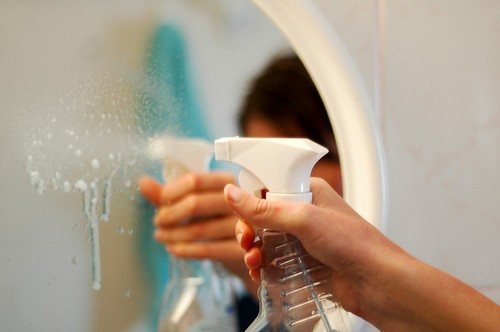
Alcohol
Alcohol in a solution with water will not only add shine, but also remove old stains. Particularly contaminated surfaces are wiped with pure alcohol or vodka.
Onion
Use half a fresh onion to wipe the mirror to clean dirt and repel flying insects. Onion gruel removes particularly old stains that require pre-soaking.
Chalk
Chalk slurry is prepared from equal proportions of loose chalk and water, applied to a surface, allowed to dry a little and removed with paper napkins. Then polish with a soft cloth.
Toothpaste and powder
Tooth powder is diluted with water, and toothpaste is taken in its standard form. Apply, rub in thoroughly and remove with a paper napkin. Perfectly polishes small chips and scratches.
Vinegar
It is good to wash mirrors with vinegar diluted in water at the final stage to add shine and remove stains. Vinegar is diluted in a ratio of 1:10, and vinegar essence is diluted in a ratio of 1:100.
Wax
Wax is, first of all, a polish. It perfectly matts small scratches and protects the frame from moisture.
Turpentine
To remove particularly stubborn stains - traces of oil paint, cosmetics - turpentine is used. Remove stains with a dampened swab, then wash with detergents and polish.
Paper
Using ordinary sheets of newspaper, you can add shine to washed glass and remove stains. This is facilitated by both the chemical composition of printing ink and the structure of newsprint. To do this, sheets of paper are crumpled into a loose ball and wiped over the surface. The lumps are changed several times.
Capron
You shouldn’t throw away worn-out ordinary nylon tights - they can turn into a good way to wash glass. To do this, they are folded several times so that a shape is convenient for the hand, and any object on which it is necessary to avoid the appearance of stains is washed, like a sponge. You can use any product and then polish. Thanks to the specially woven nylon, there are no streaks left, and moisture is completely absorbed by such a homemade sponge.
Use of abrasives
Any abrasives are prohibited for use for cleaning mirrors, as they leave micro-scratches that will give an untidy appearance, remove shine and create stains.
Choosing a rag
For excellent results, you need to choose soft cloths for washing that do not leave behind small fibers, and even more so, threads. The rag should fit comfortably in your hand, be flexible and spotlessly clean.
How to clean a mirror without detergent
With a well-chosen rag, fluffy, porous, you can wash off dirt without the use of additional special equipment. For example, in the bathroom you can turn on boiling water for 1-2 minutes, and when the mirror fogs up, wipe it dry.
Cleaning mirrors without streaks
In order to avoid streaks, firstly, the rag must be chosen correctly. Secondly, the mirror surface should be wiped in one direction - from right to left, or from top to bottom. This point must be especially taken into account during final polishing.
How to achieve shine
Gloss is, first of all, the absence of visible stains and scratches. If there is no damage to the surface and the stains have been washed off, polishing solutions and special foams - polishes - will help to add shine.
Frequency of washing
You should wash the mirror as soon as it gets dirty.
Dried drops and marks do not contribute to shine. The easiest way is to keep dry wipes on the shelf nearby, so that if they get dirty, you can immediately wipe them and make them shine, and not leave them for later.

Features of removing various contaminants
The easiest way to remove dust from a mirror surface is. But there are stains that cannot be erased without much effort.
- Limescale. Limescale deposits are removed with an acidic medium, for example vinegar. In addition, a very large stain can be removed with a plumbing gel to remove limescale.
- Sticker marks. Traces from stickers are soaked with hot water and scraped off with a scraper. It is also good to remove such stains with nail polish remover.
- Marker. “Artistic creativity” with a marker on the glass is removed with a swab moistened with alcohol or vodka. Then they rub it.
- Traces of insects. Traces of insect activity can be removed with a weak solution of baking soda.Old stains are soaked by repeatedly wiping with a cloth soaked in a solution, and then polished.
- Cosmetics stains. Stains from cosmetics or cosmetic preparations are usually fat (lipstick, mascara, cream). To dissolve the greasy base, use an aqueous solution of any dishwashing detergent.
- Oily spots. In general, any greasy stains can be removed using a cleaning solution. If they are old and dried out, they should first be soaked and then removed with a hard (but not metal) sponge or scraper. You can also wipe off the grease with paper and then wash it as usual.
How to prevent your bathroom mirror from fogging up
The following solutions to choose from will help prevent your bathroom mirror from fogging up:
- a very strong solution of table salt;
- thick slurry of laundry soap;
- aqueous gelatin solution.
Rub the solution until completely dry with a soft cloth. The effect does not last long; this procedure must be repeated periodically.
Does a new mirror need to be washed?
A completely new mirror also requires special care. First, it is washed with warm water on all sides, and then the reflective part is rubbed in a suitable way to add shine. If there is a frame, it should also be wiped clean and polished.
General recommendations
You need to choose a place for the mirror so that it is not exposed to direct sunlight - they can ruin the amalgam. It should not be hung opposite the front door - it is believed that it will not only reflect all the bad things that “enter” the house, but also the good. Amalgam is not resistant to dampness, so the bathroom must have good ventilation.


